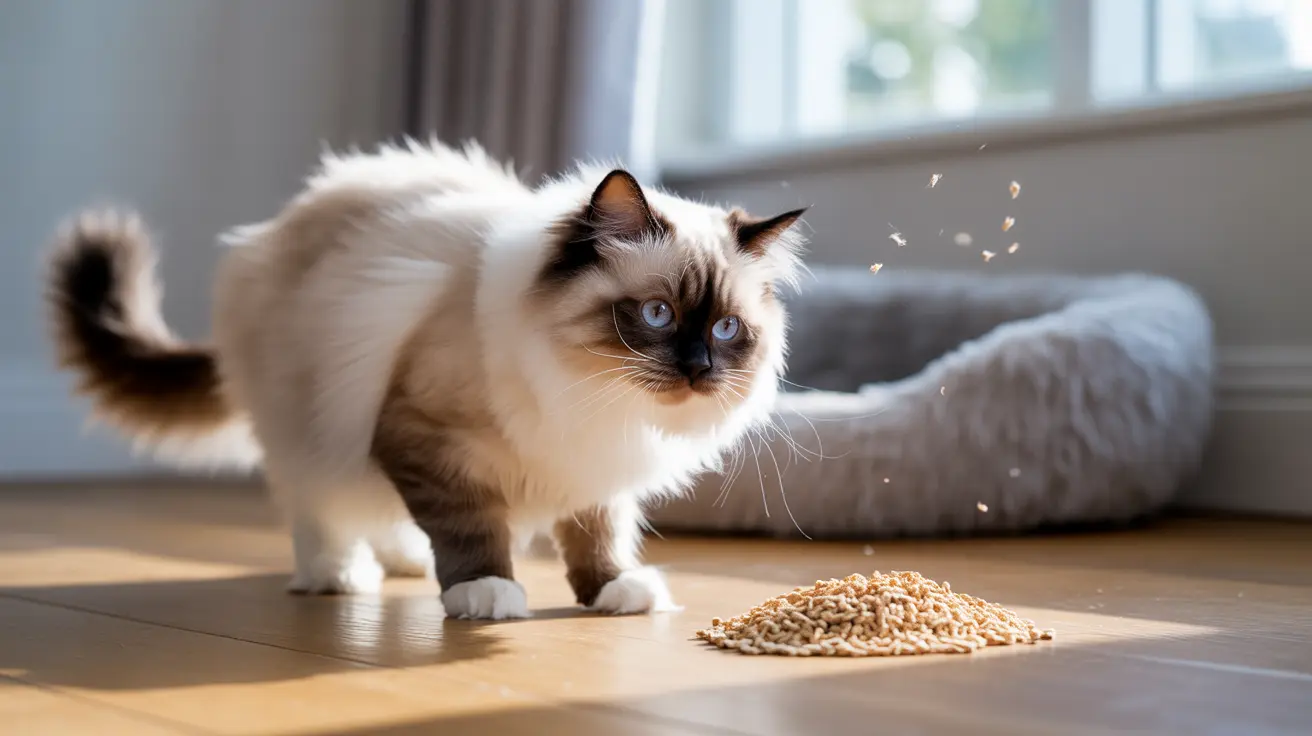The Risks of Vacuuming Cat Litter
Damage to Your Vacuum
Regular vacuum cleaners aren't designed to handle cat litter, and using them for this purpose can lead to several problems:
- Abrasive litter particles can damage internal components
- Clumping litter can create blockages in hoses and filters
- Fine dust can overwhelm and clog filtration systems
- Motor burnout from reduced airflow and overheating
Health Concerns
Vacuuming cat litter can pose various health risks:
- Spread of bacteria and parasites from used litter
- Inhalation of silica dust and other harmful particles
- Potential exposure to toxoplasmosis, especially dangerous for pregnant women
- Respiratory irritation from airborne litter dust
Safe Ways to Vacuum Cat Litter
Choose the Right Equipment
If you must vacuum cat litter, use:
- Shop vacuums or wet/dry vacuums
- Vacuums with HEPA filtration systems
- Pet-specific vacuum models designed for tough debris
- Models with strong suction and specialized attachments
Best Practices
Follow these guidelines for safer vacuuming:
- Only vacuum completely dry, clean litter
- Clean filters and empty the canister frequently
- Use appropriate attachments designed for debris
- Vacuum small amounts at a time
- Wear a mask to protect against dust inhalation
Better Alternatives to Vacuuming
Consider these safer alternatives for cleaning up cat litter:
- Sweep with a broom and dustpan
- Use a rubber broom designed for pet hair and litter
- Place tracking mats around the litter box
- Invest in a self-cleaning litter box
- Mop the area after sweeping
Prevention Tips
Reduce the need for vacuuming with these preventive measures:
- Use high-sided litter boxes to minimize scatter
- Place litter boxes on large mats that catch loose particles
- Choose low-tracking or heavy granule litter types
- Clean the litter box daily to prevent overflow
- Consider covered litter boxes with entrance mats
Frequently Asked Questions
Is it safe to vacuum cat litter with a regular household vacuum?
No, regular household vacuums are not recommended for cat litter as it can damage internal components and potentially void your warranty. Use specialized pet vacuums or alternative cleaning methods instead.
What types of cat litter can be safely vacuumed without damaging the vacuum?
Only completely dry, non-clumping litter can be safely vacuumed using appropriate equipment. However, even then, it's better to sweep up the majority and vacuum only small amounts of residual litter.
How can I vacuum cat litter without clogging or harming my vacuum cleaner?
Use a shop vac or pet-specific vacuum with HEPA filtration, vacuum only small amounts at a time, and clean filters frequently. Always empty the canister immediately after use.
What are the health risks associated with vacuuming cat litter dust and debris?
Health risks include exposure to bacteria, parasites, silica dust, and potential respiratory irritants. Pregnant women and immunocompromised individuals should avoid vacuuming cat litter altogether.
What are the best alternatives to vacuuming cat litter spills around the litter box?
The best alternatives include sweeping with a broom and dustpan, using rubber brooms, implementing tracking mats, and maintaining regular litter box cleaning schedules to prevent spills.
Managing cat litter requires the right tools and techniques to maintain a clean home while protecting your appliances and health. While vacuuming might seem convenient, it's often better to rely on traditional cleaning methods or specialized equipment designed specifically for pet messes.






